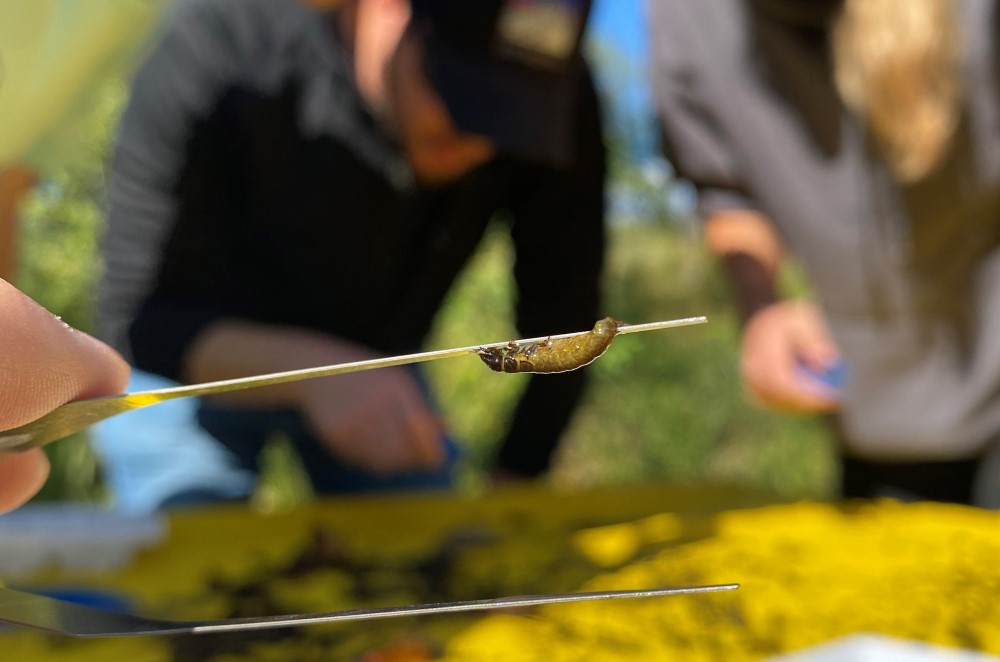The Izaak Walton League’s mission is to conserve, restore, and promote the sustainable use and enjoyment of natural resources, including soil, air, woods, waters and wildlife – and volunteer science helps further this mission!
There is so much work to be done in the conservation field, but there are not enough scientists or hours in the day to complete all the scientific research that needs to be accomplished. This is where volunteer scientists can help! Volunteer or community science, also known as citizen science, is the involvement of citizens in scientific research (Fritz, et al., 2019). “[Volunteer] science has been touted as an effective means to collect large-scale data while engaging the public” (Schuttler, et al., 2019). Volunteer science leads to scientific knowledge, which leads to creating better air, water and health for all!
Although some are skeptical of the accuracy of volunteer-collected data, many studies show that volunteer scientists can be quickly trained and can collect data that is highly accurate, compared to data collected by professionals (Kremen, et al., 2011). Additionally, “[volunteer] science projects have been remarkably successful in advancing scientific knowledge, and contributions from [volunteer] scientists now provide a vast quantity of data” (Bonney, et al., 2009). Professionals need to ensure the data they are producing and analyzing is of the highest quality, and the same is true for volunteer scientists.
In the Izaak Walton League’s Save Our Streams (SOS) program, volunteer science has had a major impact by filling in huge gaps in water quality monitoring. The Izaak Walton League created the Clean Water Hub for volunteers to share their data, coordinate efforts, and track water quality. This nationwide database provides information on what streams need restoration and protection, since there are not enough state or federal staff to monitor waterways across the country.
Of the sites that are monitored by paid professionals, many are monitored on rotation, with some being checked only once every 30 years. Additionally, only about 30 percent of streams in the U.S. are monitored by government agencies. This is why volunteer scientists are so important! The Izaak Walton League trains volunteers to properly monitor local waterways and add their findings to the Clean Water Hub. SOS volunteers collect data that helps establish a baseline for stream health.
One way the Izaak Walton League monitors stream health is through the analysis of aquatic benthic macroinvertebrates, via Save Our Streams biological monitoring or the Creek Critters mobile app. "Creek critters" are important bioindicators of pollution in a stream. And studies have found that “data from samples of benthic stream invertebrates collected by citizen scientists documented the same trends in invertebrate community response to urban development as samples collected by professionals” (Kremen, et al., 2011). This shows that volunteer scientists have the ability to accurately identify and report data on benthic macroinvertebrates. That data can then be used to track trends in stream health.
 A common net-spinning caddisfly larva found in a stream during an SOS training in Cedar Rapids, Iowa.
A common net-spinning caddisfly larva found in a stream during an SOS training in Cedar Rapids, Iowa.
Volunteer science has benefits beyond additional data, including creating a positive connection between people and nature. “Volunteer science has been shown to increase awareness of nature and leads to beneficial environmental attitudes and behaviors” (Schuttler, et al., 2019). Volunteer scientists at the Izaak Walton League embody conservation, restoration, and promotion of the sustainable use and enjoyment of natural resources. Overall, volunteer science benefits everyone involved and protects resources vital to our health and wellbeing!
Learn more about becoming a volunteer scientist
Citations
- Bonney, Rick, et al. Citizen Science: A Developing Tool for Expanding Science Knowledge and
Scientific Literacy. BioScience (2009). https://doi.org/10.1525/bio.2009.59.11.9
- Fritz, S., See, L., Carlson, T. et al. Citizen science and the United Nations Sustainable
Development Goals. Nat Sustain 2, 922–930 (2019). https://doi.org/10.1038/s41893-019-0390-3
- Kremen, C., Ullman, S., & Thorp, R.W. Evaluating the Quality of Citizen-Scientist Data on
Pollinator Communities. Conservation Biology. Volume 25, Issue 3, p.607-617. (April 2011). https://doi.org/10.1111/j.1523-1739.2011.01657.x
- Schuttler, S., Sears, R., Orendain, I., Khot, R., Rubenstein, D., Rubenstein, N., Dunn, R., Baird,
E., Kandros, K., O’Brien, T., & Kays, R. Citizen Science in Schools: Students Collect Valuable Mammal Data for Science, Conservation and Community Engagement. BioScience. Volume 69, Issue 1, p. 69-79 (2019). https://doi.org/10.1093/biosci/biy141
Top photo: Volunteers at a Save Our Streams training in Cedar Rapids, Iowa.
Grace Kann is a student at Cornell College and is the 2022 Save Our Streams intern.